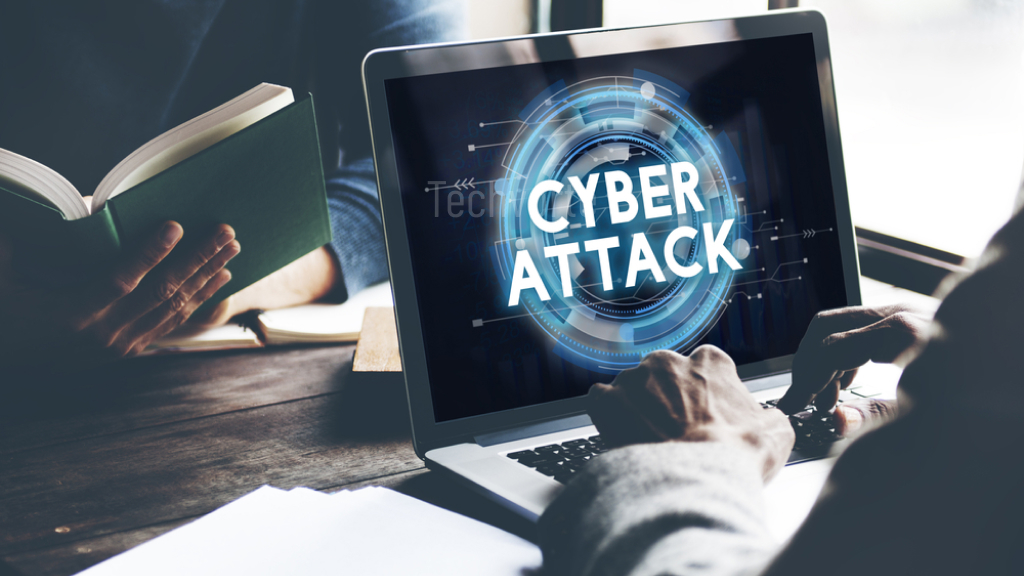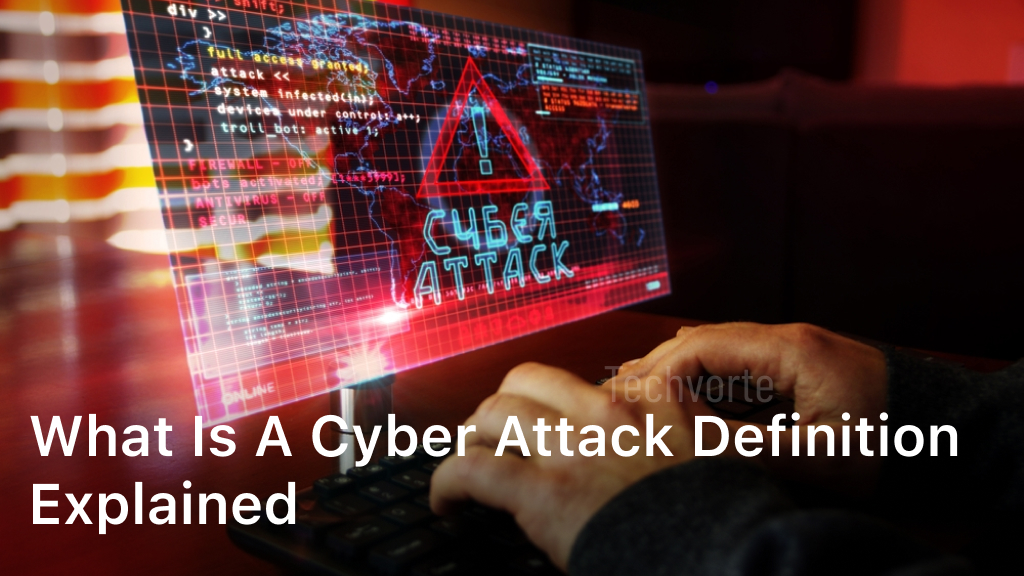A cyber attack refers to an attempted breach of a computer system or network.
It involves unauthorized access, theft and manipulation of sensitive data and can lead to devastating consequences for individuals and organizations alike.
In this article, we will explore the different types of cyber attacks that can occur and why cyber attack prevention measures are critical in protecting against them.
We will discuss the importance of understanding cyber attack definitions, as well as explore strategies for cyber attack prevention.
Join us as we delve into the world of cyber threats and provide valuable insights into safeguarding against cybercrime.
Understanding Different Types of Cyber Attacks

Cyber attacks are increasingly prevalent in today’s technology-dependent world.
It’s essential to understand the different types of cyber attacks to prevent them from occurring.
Here are some common cyber attack types to be aware of.
Phishing Attacks
Phishing attacks are one of the most common types of cyber attacks.
These attacks use social engineering to trick users into divulging private information such as usernames, passwords and credit card information.
Phishing attacks can be prevented through awareness training and by using anti-phishing software.
Ransomware Attacks
Ransomware attacks involve malware that encrypts a victim’s files.
The attacker then demands payment, often in the form of cryptocurrency, to restore access to the files.
Ransomware attacks can be prevented by using anti-malware software and regularly backing up important files.
Man-in-the-Middle (MitM) Attacks
MitM attacks intercept communication between two parties, allowing the attacker to intercept and manipulate data.
MitM attacks can be prevented through the use of end-to-end encryption and by avoiding public Wi-Fi networks.
Distributed Denial of Service (DDoS) Attacks
DDoS attacks flood a network or server with traffic, causing it to become overloaded and unavailable.
DDoS attacks can be prevented or mitigated by using DDoS protection services or by limiting network traffic.
SQL Injection Attacks
SQL injection attacks exploit vulnerabilities in a website’s code to gain access to sensitive information or to manipulate the website’s data.
SQL injection attacks can be prevented by implementing proper input validation and by keeping website software up to date.
By understanding the different types of cyber attacks, organizations can take proactive measures to prevent them from occurring.
This includes employee awareness training and using the latest cybersecurity technologies and practices.
Social Engineering
This involves manipulating individuals into divulging confidential information or performing actions that compromise security, often through psychological manipulation or deception.
Importance of Cyber Attack Prevention and Protection
In today’s digital era, cyber attacks are a significant threat to businesses and individuals alike.
It is essential to take proactive steps towards cyber attack prevention and protection to avoid devastating consequences like financial loss, reputational damage and operational disruption.
While there is no guarantee of 100% cyber attack prevention, several measures can help minimize the risk and mitigate the impacts of an attack.
These include regularly updating software, using strong passwords and implementing firewalls and other security tools.
Cybersecurity awareness is also of utmost importance in preventing cyber attacks.
Educating employees about phishing scams, social engineering tactics and other cybersecurity threats can significantly reduce the risk of a successful attack.
In addition to prevention strategies, it is crucial to have robust cyber attack protection measures in place.
This can include incident response plans and disaster recovery plans, which outline procedures for responding to a cyber attack and restoring business operations in the aftermath.
All in all, proactive cyber attack prevention and protection measures are critical to safeguarding sensitive information and ensuring that businesses can operate effectively in the digital age.
Responding to a Cyber Attack
When a cyber attack occurs, it is critical that organizations have a detailed incident response plan in place to minimize the damage.
The first step is to assess the severity of the attack and determine the potential impact on critical systems and data.
Isolate the Affected Systems
The next step is to isolate the affected systems from the rest of the network to prevent the attack from spreading.
This can be achieved by disconnecting the infected devices from the network or by shutting down the compromised systems entirely.
Notify Relevant Parties
Organizations must inform all relevant parties impacted by the cyber attack, including customers, partners and employees.
It is important to be transparent about the situation and provide clear communication about how the organization is responding to the attack.
Implement Mitigation Strategies
Once the affected systems have been isolated, organizations should implement mitigation strategies to limit the impact of the attack.
This may include restoring data from backups, applying security patches, or resetting passwords.
Conduct Post-Incident Analysis
Finally, organizations should conduct a post-incident analysis to identify any weaknesses or vulnerabilities in their security systems and make necessary changes to prevent future cyber attacks.
Overall, a timely and effective response is crucial to mitigating the damage caused by a cyber attack.
Consequences of a Cyber Attack
When a cyber attack occurs, its consequences can be severe and far-reaching.
One of the first impacts is often financial, as organizations may suffer losses from theft or extortion attempts.
In addition, cyber attacks can damage an organization’s reputation, eroding public trust and leading to long-term damage.
Operational disruptions can also occur and downtime can prevent employees from accessing essential systems and data.
To mitigate the consequences of a cyber attack, organizations must take proactive measures to prevent attacks from occurring.
This includes implementing robust cybersecurity measures such as firewalls, antivirus software and employee education programs.
Regular backups of critical systems can also help in the event of a successful attack, allowing organizations to restore systems and data without paying the ransom or suffering extended periods of downtime.
Financial Consequences
One of the most significant consequences of a cyber attack is the financial loss that organizations may suffer.
This can occur in several ways, including:
- Theft of funds or valuable information
- Ransom demands
- Cleanup costs and recovery expenses
- Penalties and legal fees incurred as a result of compliance violations
In some cases, the financial damage of a cyber attack can be severe enough to bankrupt an organization or force it to close its doors.
Therefore, it is crucial for organizations to take proactive measures to prevent cyber attacks and mitigate their financial consequences if they do occur.
Reputational Consequences
Cyber attacks can also cause severe reputational damage, particularly if sensitive data or customer information is compromised.
This can erode public trust in the affected organization and lead to long-term damage to its reputation.
This, in turn, can result in loss of business, decreased revenue and difficulty rebuilding trust with customers and stakeholders.
Organizations can address the reputational consequences of a cyber attack by being transparent and proactive in their responses.
This may involve notifying customers of the breach, offering credit monitoring or identity theft protection services and working with law enforcement to investigate the attack.
Operational Consequences
Cyber attacks can also cause significant operational disruptions, including:
- Loss of access to critical systems and data
- Unplanned downtime, leading to business interruptions and lost productivity
- Damage to physical infrastructure, such as servers and routers
- Difficulty recruiting new personnel due to a damaged reputation
Organizations can mitigate the operational consequences of a cyber attack by implementing disaster recovery and business continuity plans.
These should include regular backups of critical data and systems, training for personnel and planning for alternate means of operation in the event of a cyber attack.
Conclusion
In conclusion, cyber attacks are a serious threat to individuals, organizations and governments alike.
Understanding the various types of cyber attacks and their consequences is crucial in taking proactive steps to prevent and mitigate the impact of such attacks.
It is vital to implement effective cyber attack prevention and protection measures, including cybersecurity awareness, incident response plans and mitigation strategies.
By doing so, we can reduce the risk of cyber attacks and protect ourselves, our businesses and our communities from financial, reputational and operational consequences.
As technology continues to evolve, the threat of cyber attacks will only increase.
However, with a proactive approach to cybersecurity, we can minimize the potential impact of these attacks and ensure a safer digital future.
FAQ
What is a cyber attack?
A cyber attack refers to a deliberate attempt by hackers, crackers or other malicious individuals or organizations to gain unauthorized access to computer systems, networks, or data with malicious intent. These attacks can range from stealing sensitive information to disrupting or damaging computer systems.





